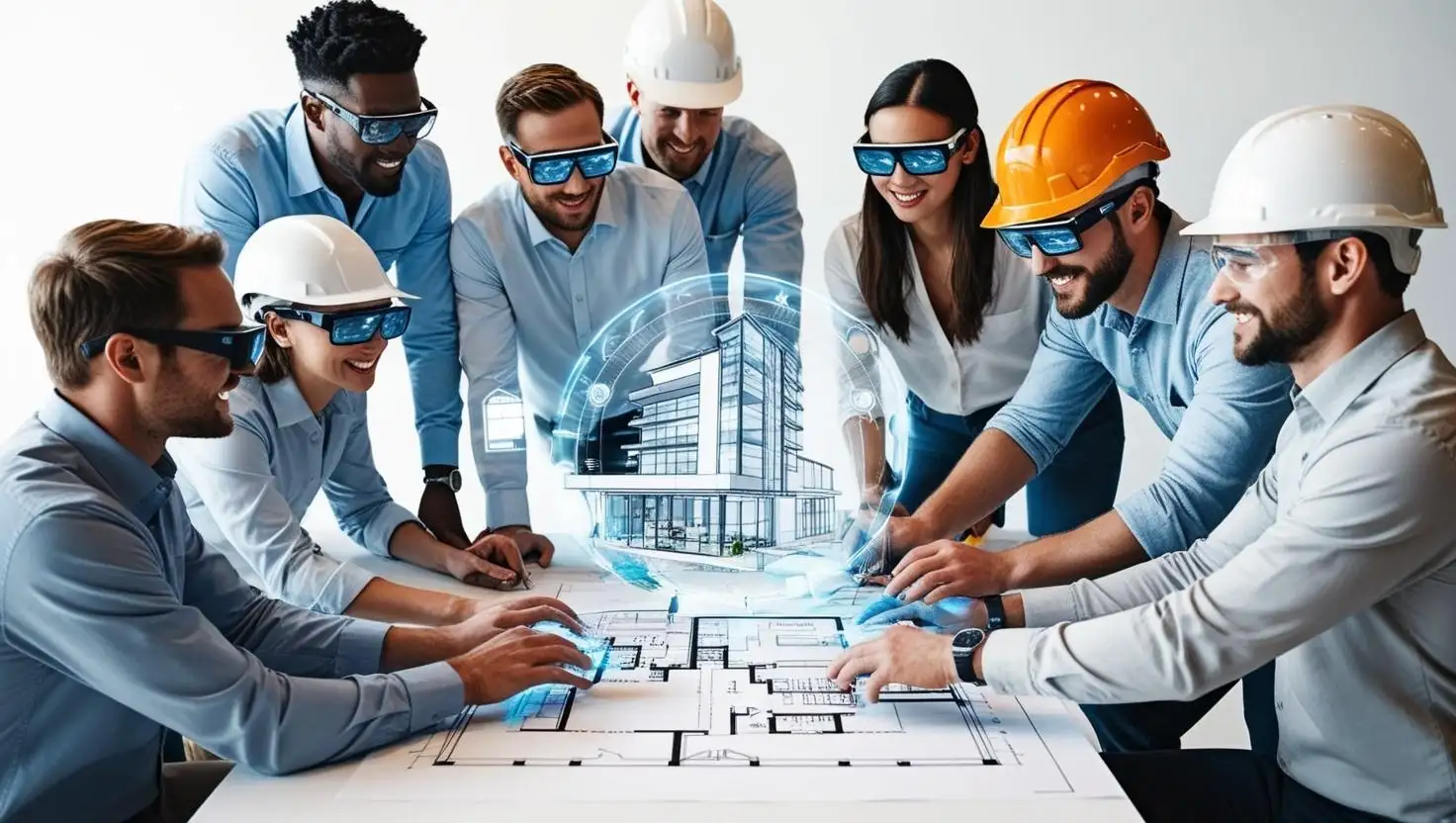With the construction industry undergoing a digital transformation, collaboration will be at the core of this change. Complex projects involving multiple stakeholders—contractors, architects, engineers, project managers, and suppliers—require seamless communication and teamwork.
The future of collaboration in construction will be driven by digital tools, real-time data sharing, and emerging technologies like AI, cloud computing, and augmented reality (AR).
Key Trends Shaping the Future of Collaboration in Construction
1. Cloud-Based Collaboration & Real-Time Data Sharing
Current Challenge:
- Many construction teams still rely on outdated communication methods like emails, phone calls, and paper-based workflows.
- This leads to version control issues, delays, and miscommunication.
Future Solution:
- Cloud-based collaboration platforms will become the industry standard.
- Teams will access real-time project updates, blueprints, and documents from anywhere, ensuring everyone works with the latest information.
Benefits:
✅ Eliminate version mismatches
✅ Improve transparency and accountability
✅ Reduce unnecessary site visits for updates
2. AI & Automation in Construction Collaboration
Current Challenge:
- Manual data entry, scheduling conflicts, and paperwork slowdown projects.
- Construction managers spend hours analysing reports and resolving disputes.
Future Solution:
- AI-powered tools will automate repetitive tasks like scheduling, cost estimation, and compliance checks.
- Smart chatbots and virtual assistants will answer common project queries in real time.
- AI-driven analytics will predict potential project delays before they happen, allowing teams to take preventive action.
3. Digital Twins & Virtual Collaboration
Current Challenge:
- Construction teams often face issues coordinating between on-site and office-based staff.
- Design clashes or errors in blueprints are identified late, leading to costly rework.
Future Solution:
- Digital twin technology (virtual replicas of physical structures) will enable real-time project monitoring.
- Teams can collaborate on design changes before physical construction begins, reducing errors.
- AR/VR-powered virtual site inspections will allow remote teams to monitor progress without being physically present.
Example:
- A project manager can use Augmented Reality (AR) to overlay digital blueprints on an active construction site, helping workers visualize the final structure.
4. IoT & Smart Construction Sites
Current Challenge:
- Manual tracking of materials, equipment, and workforce leads to inefficiencies.
- Construction sites lack real-time visibility on safety compliance.
Future Solution:
- IoT (Internet of Things) sensors will provide real-time data on equipment usage, material inventory, and worker safety.
- Automated alerts will notify teams about equipment malfunctions, material shortages, or hazardous conditions.
- Wearable tech (smart helmets, vests) will improve safety monitoring.
Example:
- Smart sensors in concrete will provide real-time data on curing progress, helping engineers optimize schedules.
5. Seamless Integration of BIM & Collaboration Platforms
Current Challenge:
- Many construction firms use Building Information Modeling (BIM) for planning but struggle to integrate it with collaboration tools.
- Data silos prevent effective coordination between different stakeholders.
Future Solution:
- BIM and collaboration platforms will merge, allowing teams to access real-time 3D models from mobile devices.
- AI-powered clash detection will identify design conflicts before they become on-site problems.
- Teams will annotate and modify BIM models collaboratively, reducing the need for back-and-forth emails.
Example:
- An architect revises a BIM model, and all changes are instantly reflected in a collaboration app, notifying engineers and contractors in real time.
Role of CollabWorx
As the construction industry embraces these technologies, CollabWorx is poised to play a vital role in:
✅ Enabling real-time communication between office and site teams
✅ Providing cloud-based document storage for easy access to project files
✅ Integrating AI-powered analytics for better decision-making
✅ Ensuring compliance and safety monitoring through automated workflows
✅ Enhancing remote collaboration with digital twin and BIM integrations
Conclusion
The future of construction collaboration is digital, automated, and data-driven. As AI, IoT, cloud computing, and digital twins become mainstream, companies that embrace these technologies will gain a competitive advantage. CollabWorx is at the forefront of this transformation, helping construction teams work smarter, reduce delays, and improve efficiency.


